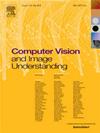通过原型强化学习识别叶片栽培品种
IF 4.3
3区 计算机科学
Q2 COMPUTER SCIENCE, ARTIFICIAL INTELLIGENCE
引用次数: 0
摘要
叶片栽培品种识别是超精细视觉分类(UFGVC)的一项典型任务,由于不同品种之间的高度相似性,这项任务面临着巨大的挑战。在实践中,一个实例可能在不同程度上与多个品种相关,尤其是在 UFGVC 数据集中。然而,根据单点标签训练的深度学习方法无法反映不同类别之间的共享模式,因此在这项任务中表现不佳。与自然语言处理(NLP)类似,通过捕捉标签之间的相互关系,标签嵌入可以在预测不同标签时选择信息量最大的单词,而忽略无关的单词。基于这一直觉,我们提出了一种名为 "原型增强学习"(Prototype-enhanced Learning,PEL)的新方法,其前提假设是,以类间关系为编码的标签嵌入会迫使图像分类模型专注于具有区分性的模式。此外,还提出了一个新的原型更新模块,通过捕捉标签语义重叠来学习类间关系,并迭代更新原型以生成持续增强的软目标。原型增强后的软标签不仅包含原始的单点标签信息,还引入了丰富的类间语义关联信息,从而为深度模型训练提供更有效的监督。在 7 个公开数据集上的大量实验结果表明,我们的方法可以显著提高超细粒度视觉分类任务的性能。代码见 https://github.com/YIYIZH/PEL。本文章由计算机程序翻译,如有差异,请以英文原文为准。
Leaf cultivar identification via prototype-enhanced learning
Leaf cultivar identification, as a typical task of ultra-fine-grained visual classification (UFGVC), is facing a huge challenge due to the high similarity among different varieties. In practice, an instance may be related to multiple varieties to varying degrees, especially in the UFGVC datasets. However, deep learning methods trained on one-hot labels fail to reflect patterns shared across categories and thus perform poorly on this task. As an analogy to natural language processing (NLP), by capturing the co-relation between labels, label embedding can select the most informative words and neglect irrelevant ones when predicting different labels. Based on this intuition, we propose a novel method named Prototype-enhanced Learning (PEL), which is predicated on the assumption that label embedding encoded with the inter-class relationships would force the image classification model to focus on discriminative patterns. In addition, a new prototype update module is put forward to learn inter-class relations by capturing label semantic overlap and iteratively update prototypes to generate continuously enhanced soft targets. Prototype-enhanced soft labels not only contain original one-hot label information, but also introduce rich inter-category semantic association information, thus providing more effective supervision for deep model training. Extensive experimental results on 7 public datasets show that our method can significantly improve the performance on the task of ultra-fine-grained visual classification. The code is available at https://github.com/YIYIZH/PEL.
求助全文
通过发布文献求助,成功后即可免费获取论文全文。
去求助
来源期刊

Computer Vision and Image Understanding
工程技术-工程:电子与电气
CiteScore
7.80
自引率
4.40%
发文量
112
审稿时长
79 days
期刊介绍:
The central focus of this journal is the computer analysis of pictorial information. Computer Vision and Image Understanding publishes papers covering all aspects of image analysis from the low-level, iconic processes of early vision to the high-level, symbolic processes of recognition and interpretation. A wide range of topics in the image understanding area is covered, including papers offering insights that differ from predominant views.
Research Areas Include:
• Theory
• Early vision
• Data structures and representations
• Shape
• Range
• Motion
• Matching and recognition
• Architecture and languages
• Vision systems
 求助内容:
求助内容: 应助结果提醒方式:
应助结果提醒方式:


